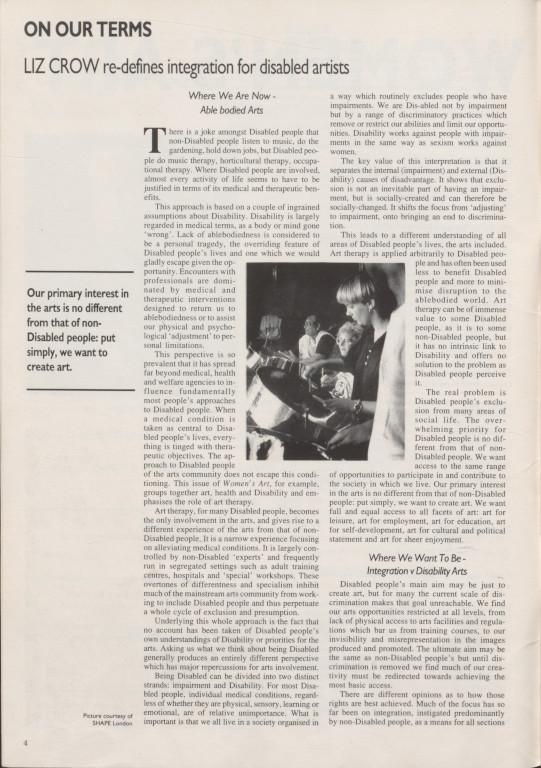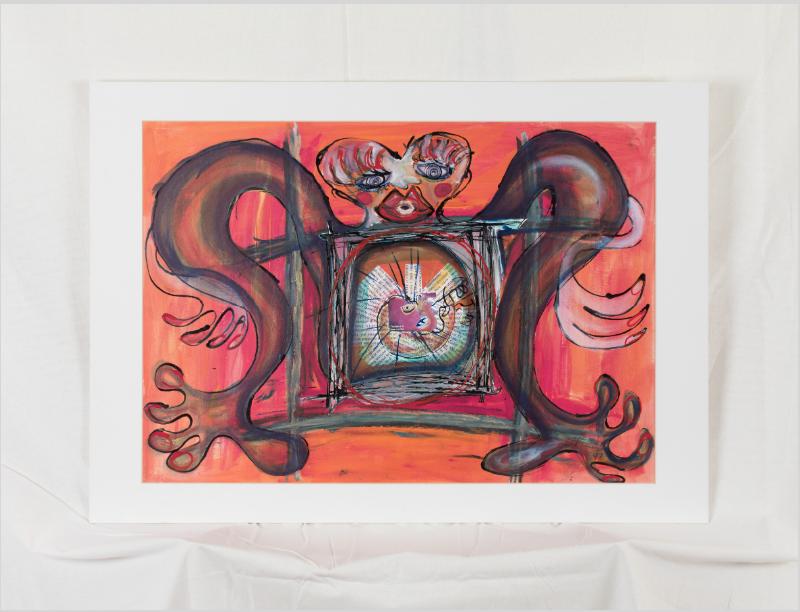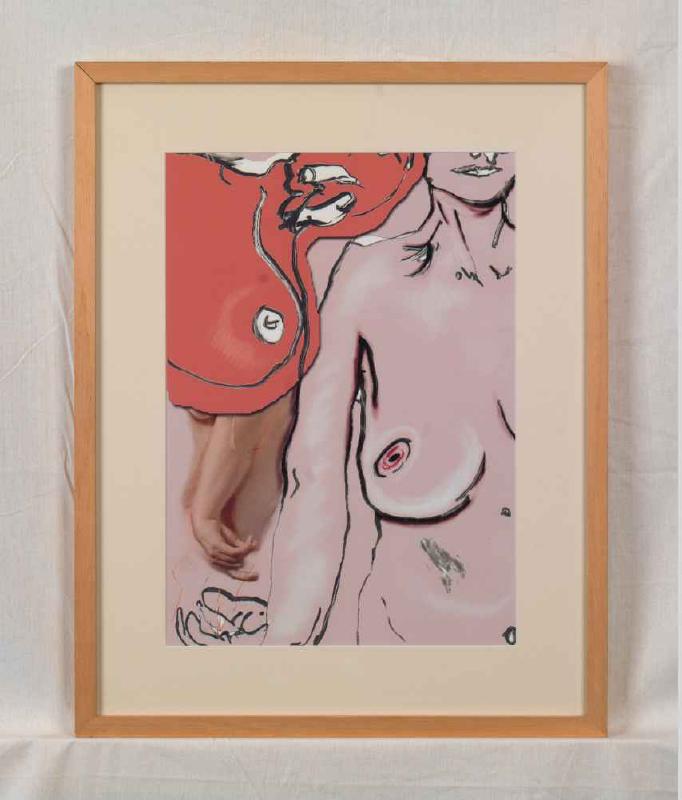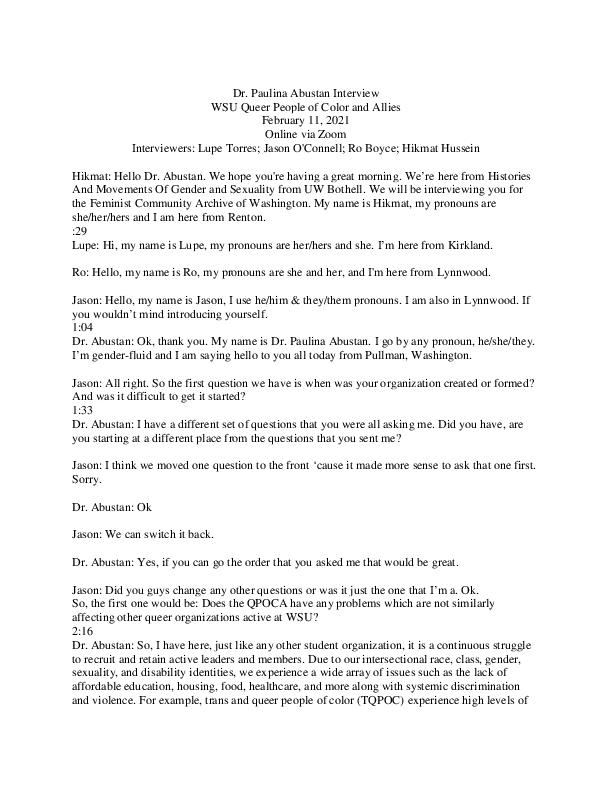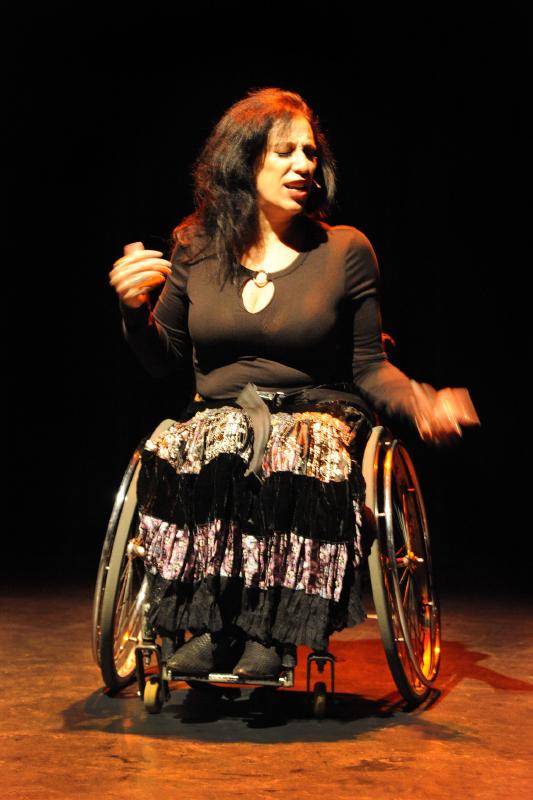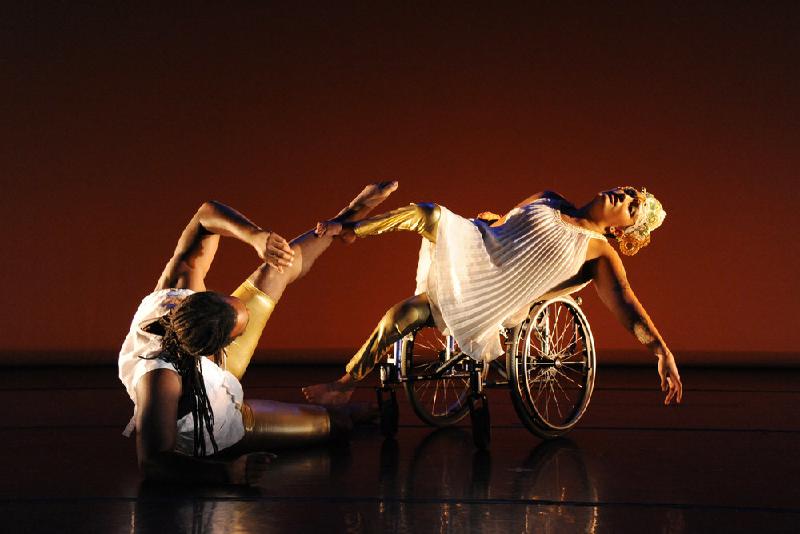Love & Sexuality in Rad Disability Art
“To be ‘In love with your body' [is] a radical, political act. Radical, because loving yourself as a disabled person means refusing to accept the negative opinions of people who do not understand your life story.”
-Georgia Macqueen Black
Introduction
From curators Karianne (she/her) and Kobi (she/her):
When you think of art, what comes to mind?
For many, the word art conjures works like Vincent van Gogh’s Starry Night, a favorite poem, or perhaps even the watercolor family portrait you painted in kindergarten. Art encompasses many forms and subjects, making it a powerful tool for self-expression and social change. For example, the Disability Arts Movement began as a way to carve out space for disabled people to express lived experiences of disability in a disabling world. Disability is often viewed through a stereotypical image of what society views as “normal” and “not normal”, placing disabled people in constraining boxes of what it looks like and means to be disabled. These social constraints disable people through discrimination and exclusion in a society built for non-disabled people. Among the stereotypes, are views of disabled bodies as ugly, deformed, and devoid of sexuality. Here we have curated a collection of disability arts that challenge these views and embrace diverse bodies, sexuality, and self-expression.
Disability Arts Movement of the 70s, 80s, and 90s
Liz Crow is one of the pioneering artists of the Disability Arts Movement. In this article, Crow talks about how disabled people always have to justify their presence in many spaces. They can’t just do something for fun or self-expression, it has to be for therapeutic benefits or self-improvement. When they do step out, they are met with contempt, or praised for their “brave” accomplishments. Disability arts challenge these ideas and redefines disability with disabled people as the experts, centering a thriving disability culture that embraces and embodies an evolving disability identity based on experience.
This self-portrait by Nancy Willis highlights the embodied self-expression of the artist's disability identity. This series focused on creating images that speak to the lived experience of being a woman in a wheelchair. By centering this experience in her work, Willis captures the true expression of how she sees herself–including the emotional experience of living in a disabling world. Emotions that–so often silenced by mainstream misrepresentations of disability as defined by others–are both personally and collectively felt within the community.
Artist Tanya Raabe explores what it is to be human–in all of our vulnerabilities, strengths, and diversity of physical and social experiences. She believes art is central to reaching new audiences and facilitating discussions about diversity, culture, and taboo subjects. For example, this work features an image of a pregnant woman birthing a child and surrounded by messages about disability, identity, and motherhood. These messages show the ways that pregnancy as a disabled person is treated as a taboo subject, only spoken of to question their identities as real mothers and their ability and right to birth and raise children.
Keeping in line with taboo subjects of disability, are sexuality, beauty, and desirability. Tanya Raabe directly challenges notions of beauty standards, and misconceptions that disabled people are incapable of sex, pleasure, and being desired by others. Nude self-portraits and depictions of naked bodies are a staple in her early art, which, like this self-portrait of her torso, exude confidence and center the experience of embracing her body and sexuality as a core part of her identity.
Disability Art and Activism Continues
Discussions and expression of disability rights and identity continue through artists and activists from all backgrounds. Sins Invalid is an organization that centers disabled artists of color and LGBTQIA+ people. They work with many organizations, including Washington State University’s Queer People of Color and Allies. This interview with Dr. Abustan, who is an assistant professor and co-founder of WSU’s QPOCA, speaks about their shared goals of promoting liberation for all by raising voices of marginalized groups and creating community spaces to embrace and support diverse bodies, sexualities, and identities.
Maria Palacio is seen here performing her poem Vagina Manifesto. With vast experience in written and performance art, she most often writes about the empowerment of women and the disability community. The Vagina Manifesto is no exception. Here, she speaks of messages we receive about vaginas as “ugly”, “dirty”, and “weak”. They feed into shame and leave people with vaginas feeling afraid to even look at or love their bodies–especially for disabled women. She challenges these messages with yearning, desire, and the freedom to embrace the power and beauty of our most intimate parts.
Also in performance art, are Neve Mazique and Antoine Hunter. Neve is a non-binary, queer, artist, who choreographs, writes, composes, and performs in the Seattle Washington area. Antoine is a deaf dancer, teacher, and mentor who is well-known in the dance community. This performance Birthing, Dying, Becoming Crip Wisdom, challenges ideas of beauty and the taboos of sexuality around disabled and diverse bodies. They celebrate the power to embrace sexuality and the embodiment of disability through transitioning life cycles.
Dr. Bianca Laureano is a self-described fat, Afro-Latina femme. She is an educator with a background in Women's Studies, a dancer, author, and disability and sexual health advocate. She has worked in many disability performance spaces, including We Love Like Barnacles: Crip Lives in Climate Chaos. This performance was a way to center disabled queer and artists of color in their expressions of love, grief, and resilience amid ecological disasters that often leave behind these marginalized communities.
Takeaways
Disabled people, women, LGBTQIA+, and people of color have long paved the way in many social justice movements. Through art of all forms, they have created spaces and organizations that promote, celebrate, and lift the voices of marginalized communities. They utilize art as a means to express their lived experiences and challenge ideas of what is considered normal, desirable, and beautiful. In doing so, they do not ignore disability identity. They express their truths, practice radical self-love, and connect with many different communities and audiences along the way.
As we have laid out here, disability art does exactly that. And so, what comes to mind when you think of art now? We encourage everyone to dive into the wonderful world of disability art and seek other examples of art for social change across history (including our fellow exhibits)!
Acknowledgments
We would like to say thank you to Dr. Julie Shayne, Penelope Wood, and Lo Radclyffe for all of the knowledge, support, and endless encouragement throughout the creation of this exhibit.
Karianne would also like to thank Dr. Jedd Murr for inspiring her strong interest in the world of art and cultural work for social change.
We would also like to acknowledge that this exhibit uses identity-first language, which speaks to the notion that disability isn't something to be ashamed of or hidden. Identity first language acknowledges disability as a part of a person's lived experiences and embodied identity. We used identity first language here to keep in line with the language used by the archives and/or artists themselves (to the best of our knowledge). Person-first language is often used with the thought that it respects the person before their disability. We believe that both forms of identifying are valid, and when in doubt it is always good to simply ask a person what they prefer. The disability community is not a monolith, and as such, this exhibit only captures an extremely small part of this vast and often misrepresented subject. While disabled people and disability rights have often been excluded or sidelined, they are intricately and deeply connected with the oppression and resistance that connect all fights for liberation and justice around the world. We would not be able to create this archive without the contributions of artists and activists in disability arts and many other movements throughout history, and we want to acknowledge their extensive efforts, sacrifice, and dedication.
About the Curators
Karianne H. (she/her) is a senior at the University of Washington Bothell. She is majoring in Psychology with a minor in Gender, Women, and Sexuality studies. Her interest in disability justice stems from her lived experiences as a queer person with invisible disabilities. She believes in the power of art, imagination, and cultural work for social change. She also believes in the importance of advocating for disability rights and centering the voices and needs of all marginalized communities. She hopes that this exhibit shows other people why it is important as well.
Kobi S. (she/ her) is a junior at the University of Washington Bothell. She is majoring in Interdisciplinary Studies: Social Sciences with a minor in Gender, Women, and Sexuality Studies. She believes in the liberation of women and their bodies to be able to do as they please. Kobi wants the sexuality of everyone to be treated with the same amount of respect and care.
Archives
Feminist Community Archive of Washington (FCA-WA)
Artifact References
Crow, L. (1992). Women's Art Magazine. National Disability Arts Collection & Archive. https://the-ndaca.org/collection/?uniqueID=ARC2164
Downing, R. (2020). Bianca Laureano in We Love Like Barnacles: Crip Lives in Climate Chaos. Sins Invalid. https://www.sinsinvalid.org/media-1
Downing, R. (2009). Maria Palacios in Sins Invalid Annual Performance. Sins Invalid. https://www.sinsinvalid.org/media-1
Downing, R. (2016). Neve Mazique and Antoine Hunter in Sins Invalid performance of Birthing, Dying, Becoming Crip Wisdom. Sins Invalid. https://www.sinsinvalid.org/media-1
Raabe, T. (1997). Birth and Categorisation. National Disability Arts Collection & Archive.https://the-ndaca.org/collection/?uniqueID=ARC97
Raabe, T. (n.d). Torso. National Disability Arts Collection & Archive. https://the-ndaca.org/collection/?uniqueID=ARC247
Torres, L.; O'Connell, J.; Boyce, R.; Hussein, H. (2021). WSU Queer People of Color and Allies. Dr. Paulina Abustan interview transcript. Feminist Community Archive of Washington. University of Washington Bothell/Cascadia College Library, University of Washington Libraries, University of Washington. CC BY-NC. http://diglib.uwb.edu/fca-wa.
Willis, N. (1983). Self Portrait Series. National Disability Arts Collection & Archive. https://the-ndaca.org/collection/?uniqueID=ARC818
Other References
About Liz Crow: Artist-Activist. (n.d). National Disability Arts Collection & Archive. https://the-ndaca.org/the-people/liz-crow/
About Nancy Willis: Artist. (n.d.). National Disability Arts Collection & Archive. https://the-ndaca.org/the-people/nancy-willis/
About Tanya Raabe-Webber: Artist. (n.d.) National Disability Arts Collection & Archive. https://the-ndaca.org/the-people/tanya-raabe-webber/
Artist Spotlight: Antoine Hunter. (2009). Sins Invalid. https://www.sinsinvalid.org/blog/artist-spotlight-antoine-hunter
Black, G. M. (2017). Why is Disability Arts Political? National Disability Arts Collection & Archive. https://the-ndaca.org/the-story/why-is-disability-arts-political/
Defining Disability Arts. (n.d.). National Disability Arts Collection & Archive. https://the-ndaca.org/the-story/defining-disability-arts/
Laureano, B. (n.d.). Bianca’s Bio. Bianca Laureano. https://biancalaureano.com/biancas-bio/
Mazique, N. (2023). Tour Neveland. https://www.nevebebad.com/
Mission and Vision. (n.d.). Sins Invalid. https://www.sinsinvalid.org/mission
Palacios, M. R. (2016). Welcome!. Crip Story. https://cripstory.wordpress.com/2016/08/14/first-blog-post/
Palacios, M. R. [Sins Invalid]. (2010, April 1). Vagina Manifesto" Maria Palacios x Sins Invalid 2009 [Video]. Youtube. https://www.youtube.com/watch?v=f1rSBI7jPmg
